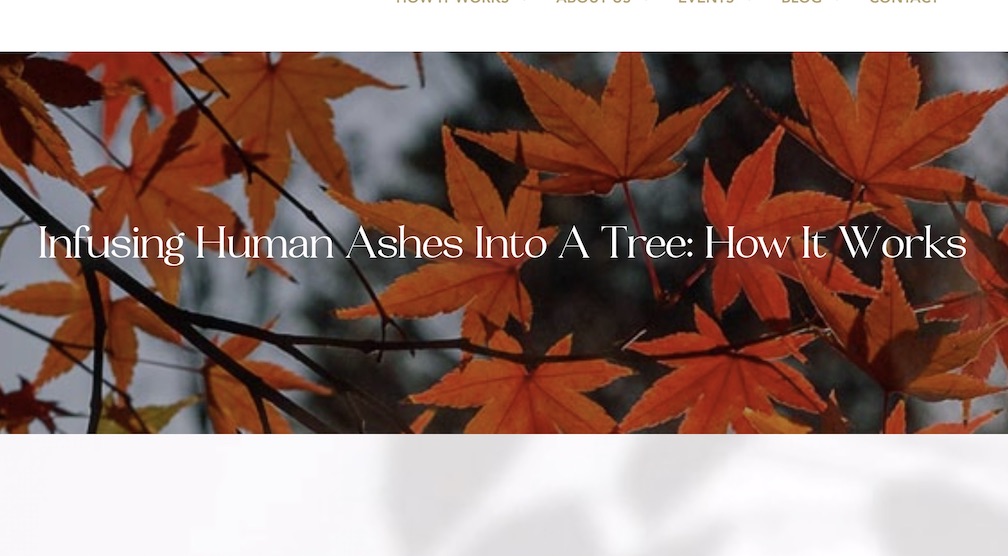Can You Become A Tree After Death? How It Works
- Written by Business Daily Media

"What will happen to my body after I die?"
It is natural for people to wonder about the end of their life and how they want to be laid to rest. However, while traditional burial options are the norm, more people have shown interest in literally "returning to dust".
More specifically, people are drawn towards a natural burial and have been looking into unique and eco-friendly ways to be a tree after death. Trees are nurturers and life-givers for many, including humans. They also represent rebirth and immortality for many. So, it is natural for people to gravitate towards this natural burial option.
How To Become A Tree After Death?
There are quite a few options to be a tree after death. Let's discuss some of the options that you can consider.
Plant A Tree In The Memorial Garden
Are you considering an eco-friendly way to honour your life while contributing to the environment? This unique service converts your ashes into living molecules that grow trees in peaceful memorial gardens.
The process is simple. Your ashes are treated to extract nutrients and minerals. These are then used to cultivate a sapling that will grow into a beautiful tree. This will be planted in a memorial forest, where you can come and visit it all year.
Not only will this tree be a living symbol of your life, but it will also contribute to the environment meaningfully. As it grows, it will provide habitat for wildlife, absorb carbon dioxide from the atmosphere, and help to clean the air.
Moreover, the forest where your tree is planted is protected by a conservation agreement. This means the land cannot be developed or logged, ensuring that your tree and the surrounding ecosystem will be preserved for generations.
As a part of this service, your tree will have its custom plaque, which will be reserved just for you in perpetuity. This plaque will serve as a lasting tribute to your life and legacy.
Human Composting Or Natural Organic Reduction
One option gaining popularity is human composting, also known as natural organic reduction. This process involves placing the body inside an enclosure or vessel with other organic materials, such as wood chips and straw. The body is not embalmed, allowing it to decompose naturally.
Over six to eight weeks, the body undergoes a natural composting process and eventually becomes soil. This soil can then be used for planting, including to support a tree or other plants. The resulting ground is typically around a cubic yard in volume or enough to fill a truck bed.
This burial offers a unique way to return to the earth and contribute to the environment. It is also more sustainable than traditional burial or cremation methods, which can have negative environmental impacts.
It's important to note that not everyone is a candidate for human composting. In addition, specific medical treatments, such as those involving radiation, may make this option unavailable.
However, for eligible people, natural organic reduction offers a meaningful and eco-friendly way to say goodbye to loved ones and return to the earth. Unfortunately, this process is still gaining precedence and is yet to be introduced in all parts of the world.
Scattering the Ashes
If you love spending time in nature, it's understandable that you might want to be a part of it even after you pass away. One popular option is to have your loved one scatter or place your ashes in a wilderness environment that is meaningful to you.
Many public outdoor spaces, like national parks, allow this under certain circumstances. However, you will need to obtain permission from the park services and may need to request a permit.
It's important to note that scattering ashes too close to developed areas or trails is usually prohibited, so it's essential to plan accordingly and ensure everyone's safety.
Consider biodegradable urns if you're uncomfortable with scattering ashes or concerned about the environmental impact. These urns will naturally break down, leaving no long-term ecological effects.
In Conclusion
Tree planting after death is an increasingly popular eco-friendly option for those who want to leave a positive impact on the environment.
Several methods are available, such as using biodegradable urns or opting for natural organic reduction. Each method has its unique benefits and considerations. Still, all share the same goal of returning the body to the earth and helping to nourish new life.
As we continue to explore more eco-friendly and sustainable options for end-of-life care, becoming a tree may become an increasingly popular choice for those who value the environment and the beauty of the natural world.









